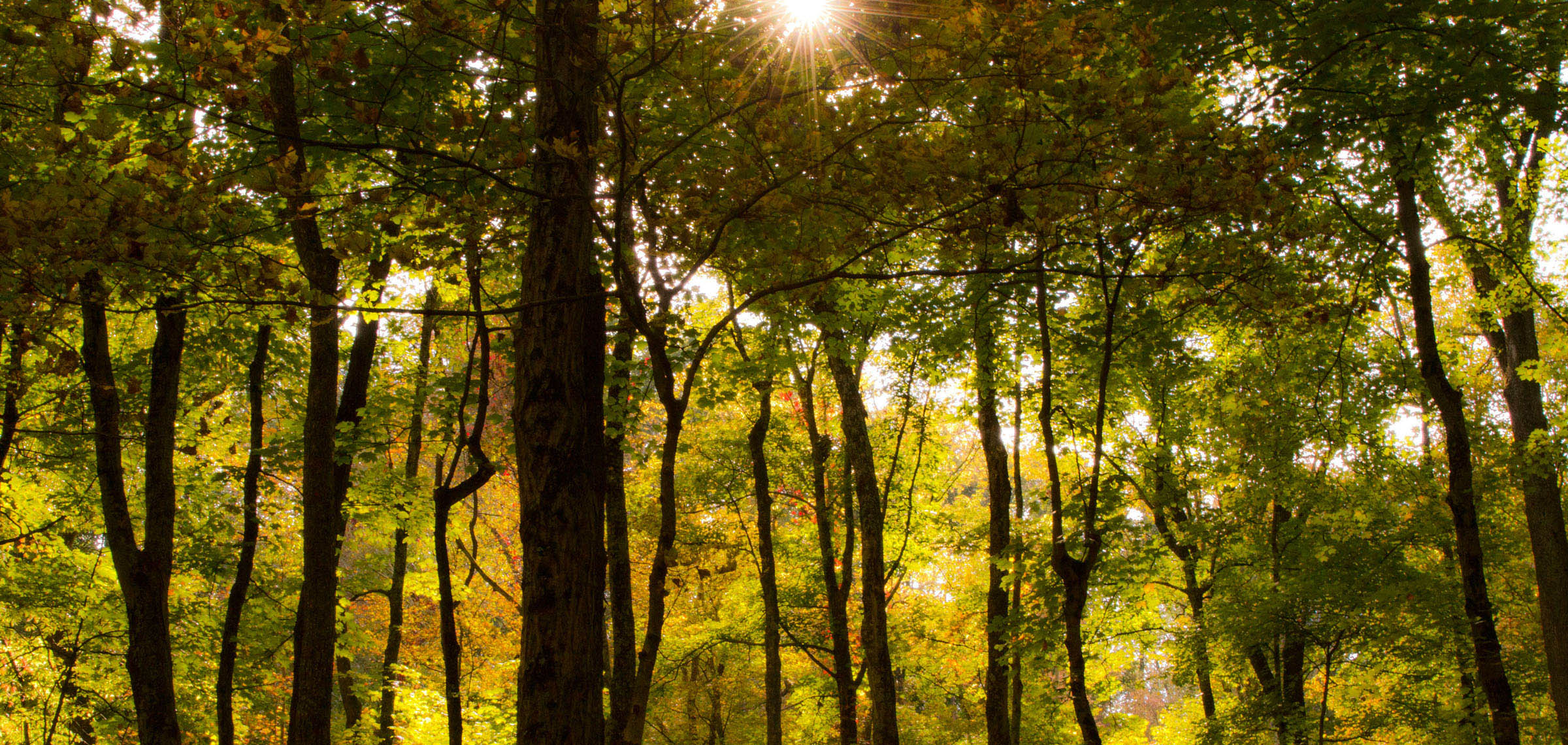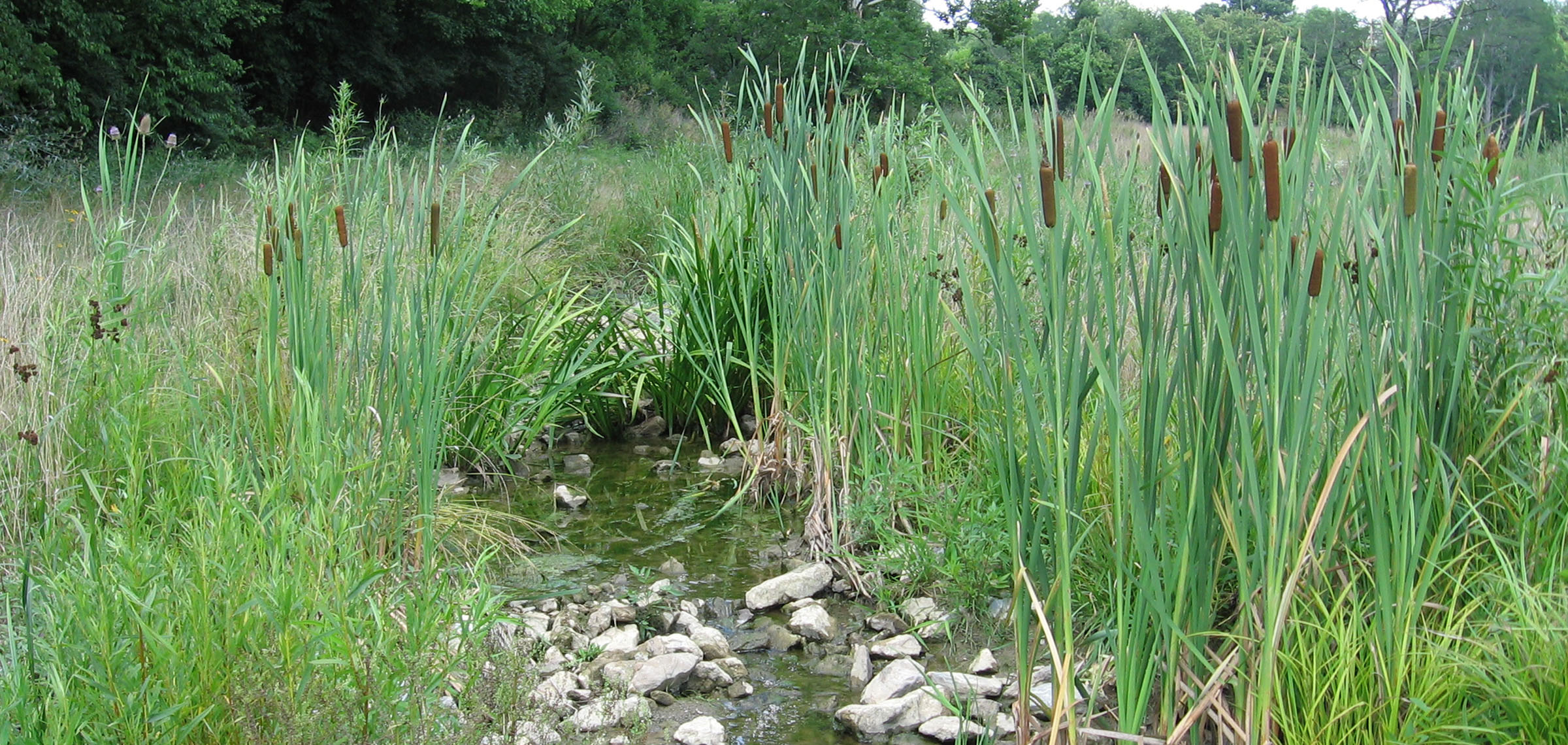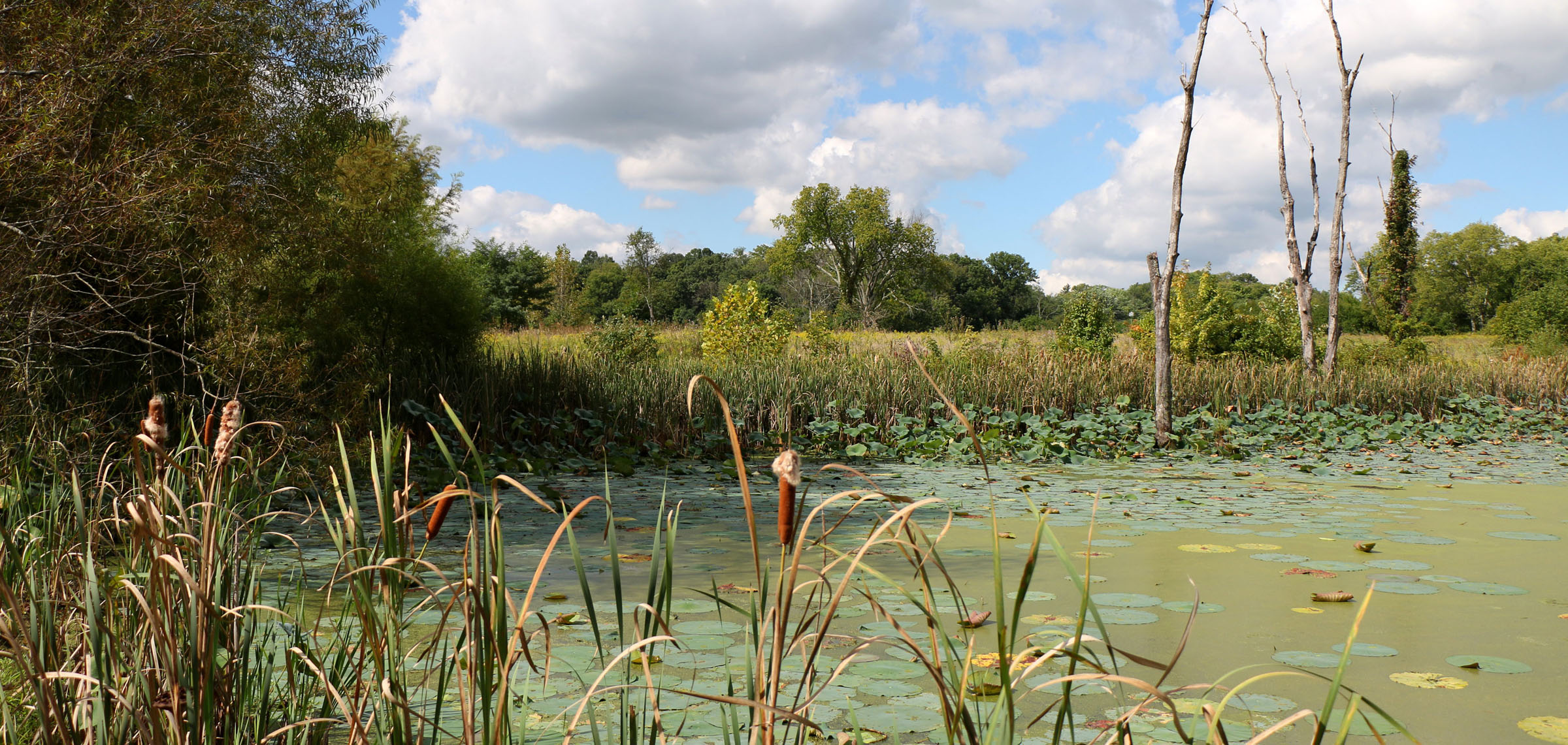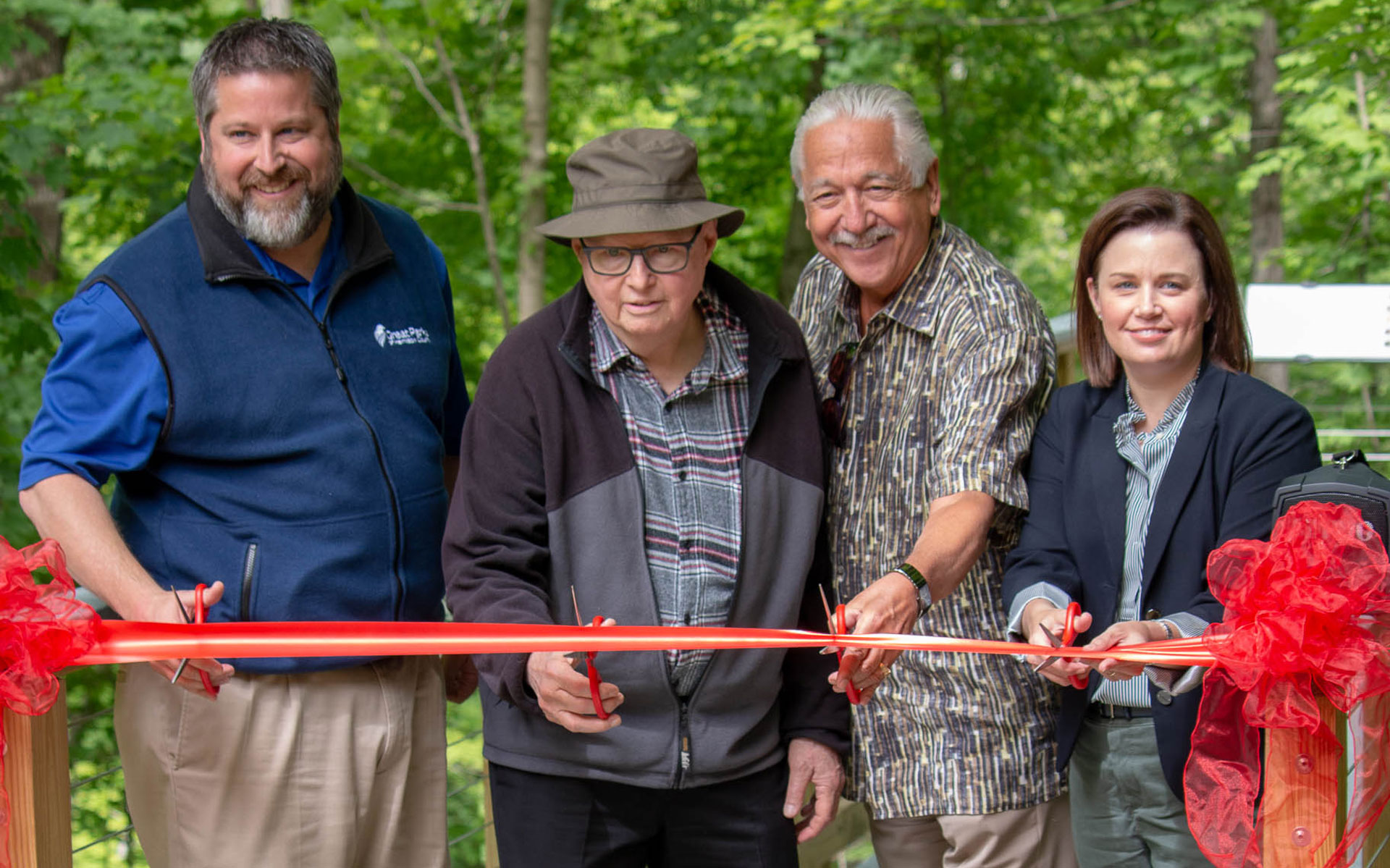A surprising variety of animals can be found in Great Parks of Hamilton County. While some populations are low in numbers and in need of special protection, such as the cave salamander or barn owl, others such as the white-tailed deer and Canada goose have done so well in recent years, that management is required to control their numbers. Maintaining this delicate balance can be challenging where natural controls in the form of large predators are absent from the local environment.
Animal descriptions and images courtesy of ODNR Division of Wildlife.
Bald Eagle
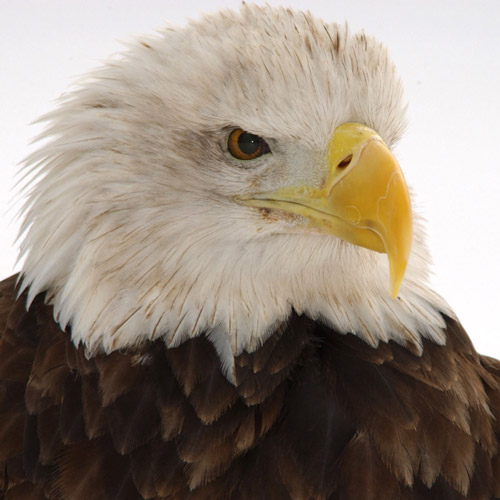
Our national symbol, the bald eagle displays many outstanding characteristics - exceptional vision, a striking appearance, and a commanding presence. Sadly, by the later half of the 20th century, the bald eagle was classified as an endangered species. Through the diligent efforts of wildlife biologists and a concerned public, the bald eagle population is coming back and is no longer on the federal endangered species list. Its federal and state status is now delisted but it is still in a federal monitoring stage for five years.
Spotted in: Campbell Lakes, Ferbank Park, Kroger Hills, Lake Isabella, Little Miami Golf Center, Miami Whitewater Forest, Otto Armleder Memorial Park, Shawnee Lookout, Winton Woods, Woodland Mound
Learn More
Lark Sparrow
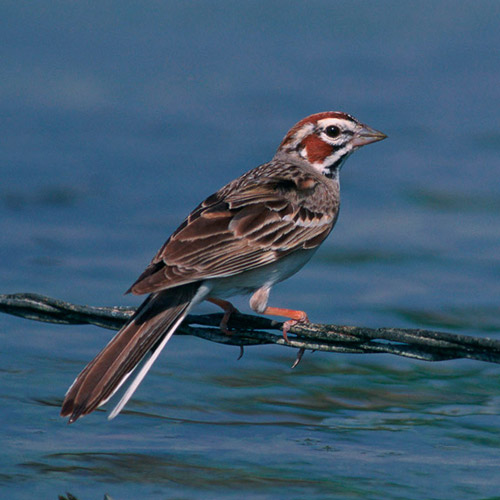
Lark sparrows are spring and summer residents in Ohio and are only occasionally observed in the winter. The lark sparrow is an endangered species in Ohio.
Spotted in: Miami Whitewater Forest, Winton Woods, Oak Glen Nature Preserve
Learn More
Bobcat
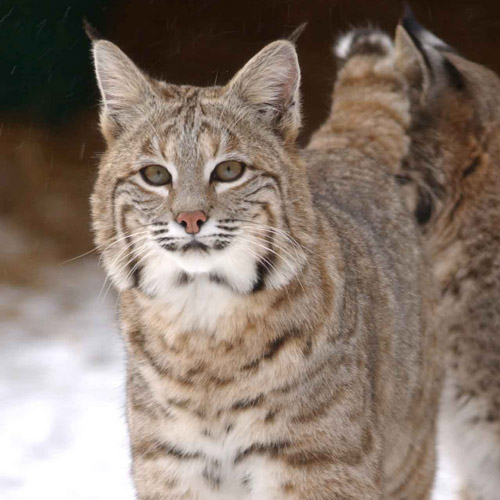
The bobcat is a species that is native to Ohio, and one of seven feral cat species found in North America. Domestic cats belong to the same family, Felidae, as the bobcat. Bobcats are very rarely seen in Ohio as they were extirpated from the state in 1850. Prior to settlement, they were common throughout Ohio. This cat has been sighted occasionally since 1850 and may be on the verge of returning "home" to Ohio; between 1970 and 2009 there have been 359 verified reports of bobcats in the state, 92 of these reports occurred in 2009.
Spotted in: Miami Whitewater Forest
Learn More
Great Blue Heron
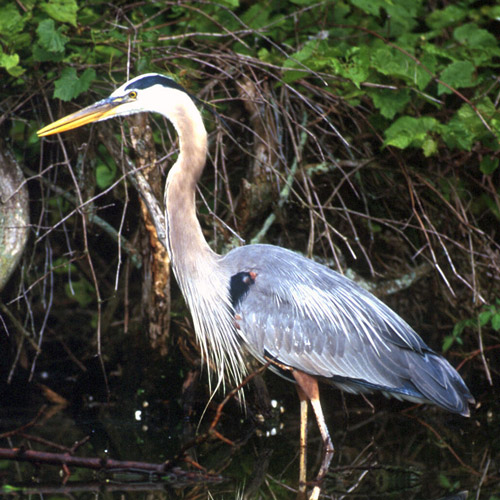
One of the largest bird species in Ohio, populations of the great blue heron are widely distributed throughout the state. Native to Ohio, there was a time when heron numbers dwindled as these birds’ feathers were a favorite of the millinery trade during the 1800s. The great blue heron is often observed motionless, as it pursues its prey while standing in a stream, river or wetland. Unlike numerous other predators that actively stalk on foot or wing, the great blue heron takes the complete opposite approach–it stands still, watching the water for a fish. Then in the blink of an eye, in a sharp and seamless movement it will snare its prey.
Spotted in: Campbell Lakes, Farbach-Werner Nature Preserve, Fernbank Park, Glenwood Gardens, Kroger Hills,Lake Isabella, Little Miami Golf Center, Miami Whitewater Forest, Mitchell Memorial Forest, Newberry Wildlife Sanctuary, Oak Glen Nature Preserve, Otto Armleder Memorial Park, Richardson Forest Preserve, Sharon Woods, Shawnee Lookout, Triple Creek, Winton Woods, Woodland Mound
Learn More
Red Fox

The red fox is one of two fox species in Ohio and one of five in North America. The state’s other fox is the gray fox. The Arctic, swift, and kit foxes are the other species found in North America. North American foxes inhabit a wide range of habitats from deserts to forests to snow-covered tundras. This isn’t completely surprising as the red and other foxes are members of the same family of adaptable animals that includes the wolves, coyote, and domestic dog – Canidae.
Spotted in: Embshoff Woods Nature Preserve, Farbach-Werner Nature Preserve, Francis RecreAcres, Glenwood Gardens, Kroger Hills, Little Miami Golf Center, Miami Whitewater Forest, Mitchell Memorial Forest, Newberry Wildlife Sanctuary, Oak Glen Nature Preserve, Otto Armleder Memorial Park, Richardson Forest Preserve, Sharon Woods, Shawnee Lookout, Triple Creek, Winton Woods, Withrow Nature Preserve, Woodland Mound
Learn More
Canada Goose
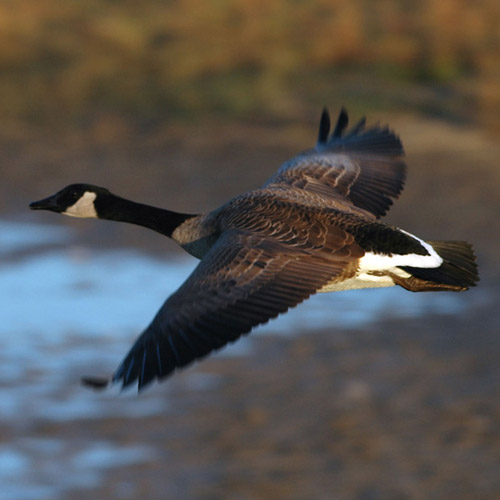
Before 1950, Canada geese were only known as migrants and winter visitors to Ohio. In the early 1950s, the Ohio Division of Wildlife initiated a program to establish resident flocks within the state. These introduction efforts were immediately successful.
Spotted in: All Great Parks
Learn More
Beaver

The beaver is North America’s largest rodent, weighing up to 60 lbs and measuring 25-30 inches long. Beavers are well adapted to life in the water. Their webbed feet, waterproof fur, clear “third-eyelids,” and flattened, rudder-like tail enable them to be excellent swimmers. Their huge front teeth help them to cut through hard woods like maple and oak. These teeth grow throughout the animal's lifetime and are necessary for survival.
Spotted in: Ferbank Park, Glenwood Gardens, Kroger Hills, Lake Isabella, Little Miami Golf Center, Miami Whitewater Forest, Otto Armleder Memorial Park, Richardson Forest Preserve, Sharon Woods, Shawnee Lookout, Winton Woods, Withrow Nature Preserve, Woodland Mound
Learn More
Great Horned Owl
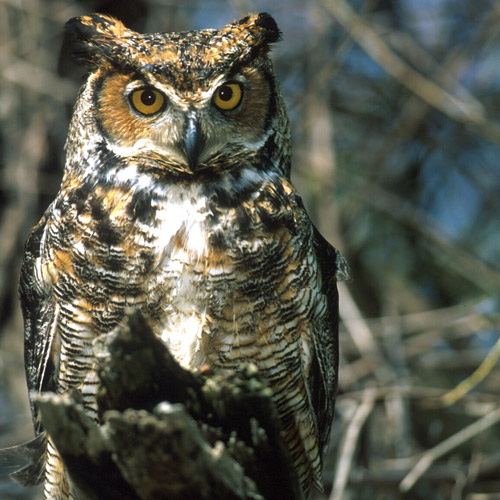
The great horned owl is the largest of Ohio's resident owls and the largest "eared" owl in North America. Once abundant in the state, great horned owl numbers have declined with the development of Ohio. This owl will eat a tremendous variety of animals and is a talented hunter; these attributes have allowed it to adapt to nearly all habitat types where there are suitable nest sites. It has a variety of calls or notes including a five-or six-note hoot, shrieks, barks, growls, and a spine-chilling scream. The great horned owl is considered the top bird of prey, fearing no creature but man.
Spotted in: Embshoff Woods Nature Preserve, Farbach-Werner Nature Preserve, Ferbank Park, Glenwood Gardens, Kroger Hills, Little Miami Golf Center, Miami Whitewater Forest, Mitchell Memorial Forest, Newberry Wildlife Sanctuary, Oak Glen Nature Preserve, Otto Armleder Memorial Park, Richardson Forest Preserve, Sharon Woods, Shawnee Lookout, Triple Creek, Winton Woods, Withrow Nature Preserve, Woodland Mound
Learn More
White-Tailed Deer

The white-tailed deer, commonly referred to as the whitetail, is perhaps Ohio’s best-known wildlife species. It is seen in the state’s wildlife areas, parks, and nature preserves as well as in the backyards of rural and suburban residents. The state’s only big game animal, it has provided table fare for generations of the state’s inhabitants from Native Americans to thousands of sportsmen and women today.
Spotted in: All Great Parks
Learn More
Prothonotary Warbler
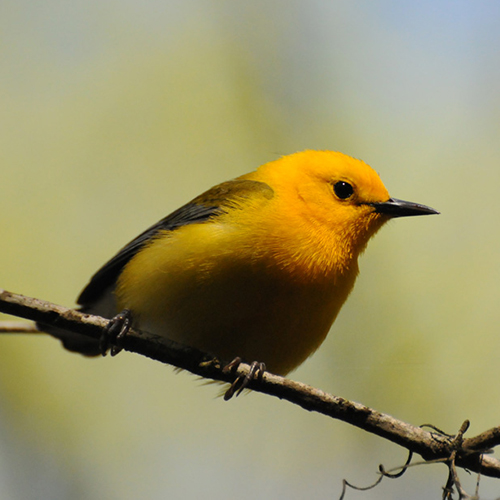
Warblers, with their brilliantly colored feathers, are the tiny jewels of Ohio's bird families. They are very active - constantly flittering around. Most are yellow with black-and-white markings. Their plumage varies considerably from spring to fall, juvenile to adult and male to female. The tail is square, often with white markings. Warblers feed almost entirely on insects gleaned from leaves and twigs with their slender bills. Members of this family abound in any Ohio woodland or brushy area during the spring and fall migration seasons. In spring their buzzlike songs (not warbling) fill the air with a delightful chorus. The warbler is an endangered species in Ohio.
Spotted in: Campbell Lakes, Ferbank Park, Glenwood Gardens, Kroger Hills, Lake Isabella, Little Miami Golf Center, Miami Whitewater Forest, Mitchell Memorial Forest, Otto Armleder Memorial Park, Sharon Woods, Shawnee Lookout, Winton Woods, Woodland Mound
Learn More
Mink
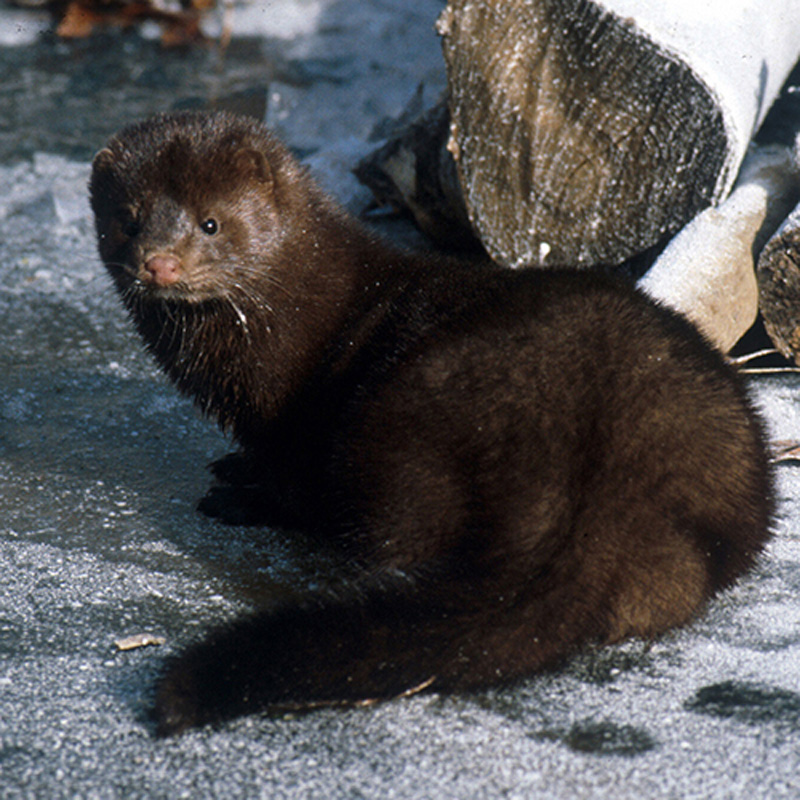
The mink was probably common in Ohio before settlement and today it occurs in every county in Ohio. Because of its preference for small streams cluttered with vegetation or wooded banks, the highest population densities occur in eastern and southeastern Ohio. The mink is prized by the trapper both for its pelt and for the great skill required to capture it. To the wildlife enthusiast, the sight of this elusive furbearer is a thrilling surprise that must be experienced quickly, before the dynamic creature can scurry away to a place of concealment.
Spotted in: Campbell Lakes, Farbach-Werner Nature Preserve, Ferbank Park, Kroger Hills, Lake Isabella, Little Miami Golf Center, Miami Whitewater Forest, Otto Armleder Memorial Park, Richardson Forest Preserve, Sharon Woods, Shawnee Lookout, Winton Woods, Woodland Mound
Learn More
Coyote
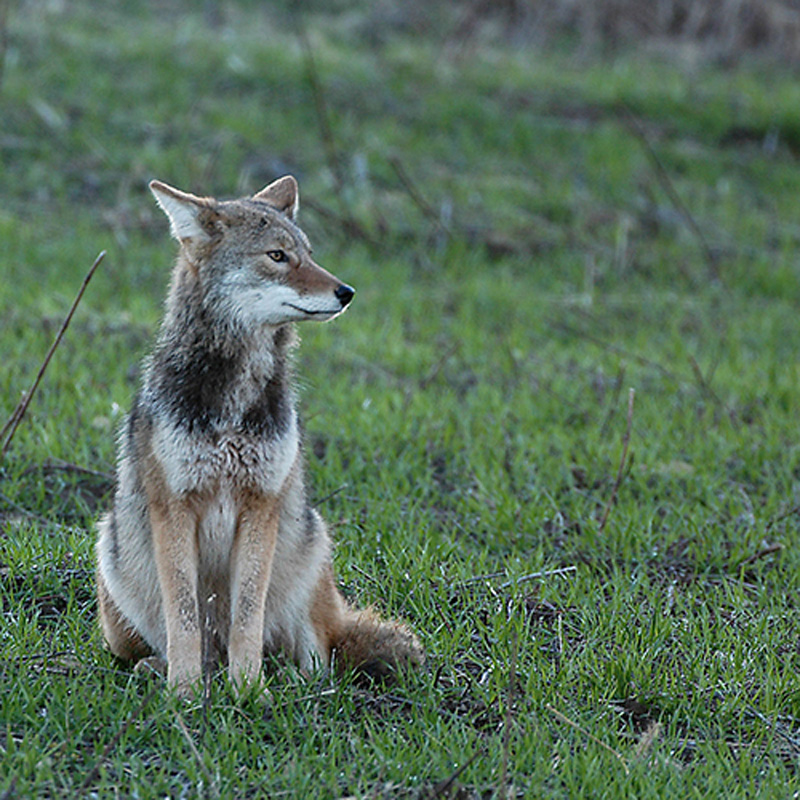
Native American folklore is filled with tales of the coyote. This animal is either revered for its intelligence and ability to resolve a conflict or threat to its life or is frowned upon for being a cunning and deceiving manipulator, much as it is thought of in real life. The coyote is not native to Ohio, but it is present throughout the state today. Love or hate it, the coyote has the ability to make the best of a bad situation to survive or even prosper. Usually, we associate the coyote with the open, deserted lands of the west. As its presence in Ohio shows, this versatile animal can make a home most anywhere.
Spotted in: All Great Parks
Learn More
Wild Turkey

Upland birds are known for several traits which distinguish them from other birds. They are chicken-like in appearance, and have short, rounded wings, short heavy bills, and heavy bodies. They stay on dry ground and seek cover in brush or woodlands. Typically, these birds do not migrate, but adapt to seasonal changes. The wild turkey has returned to the Ohio landscape after many years of absence. This bird once inhabited forested areas of the entire state, providing food and sport for Native Americans and early Ohio settlers. As settlement continued and forest lands were converted to cropland, the wild turkey’s population dwindled to the point that no birds remained in the state by 1904.
Spotted in: Farbach-Werner Nature Preserve, Glenwood Gardens, Miami Whitewater Forest, Richardson Forest Preserve, Shawnee Lookout, Winton Woods
Learn More














